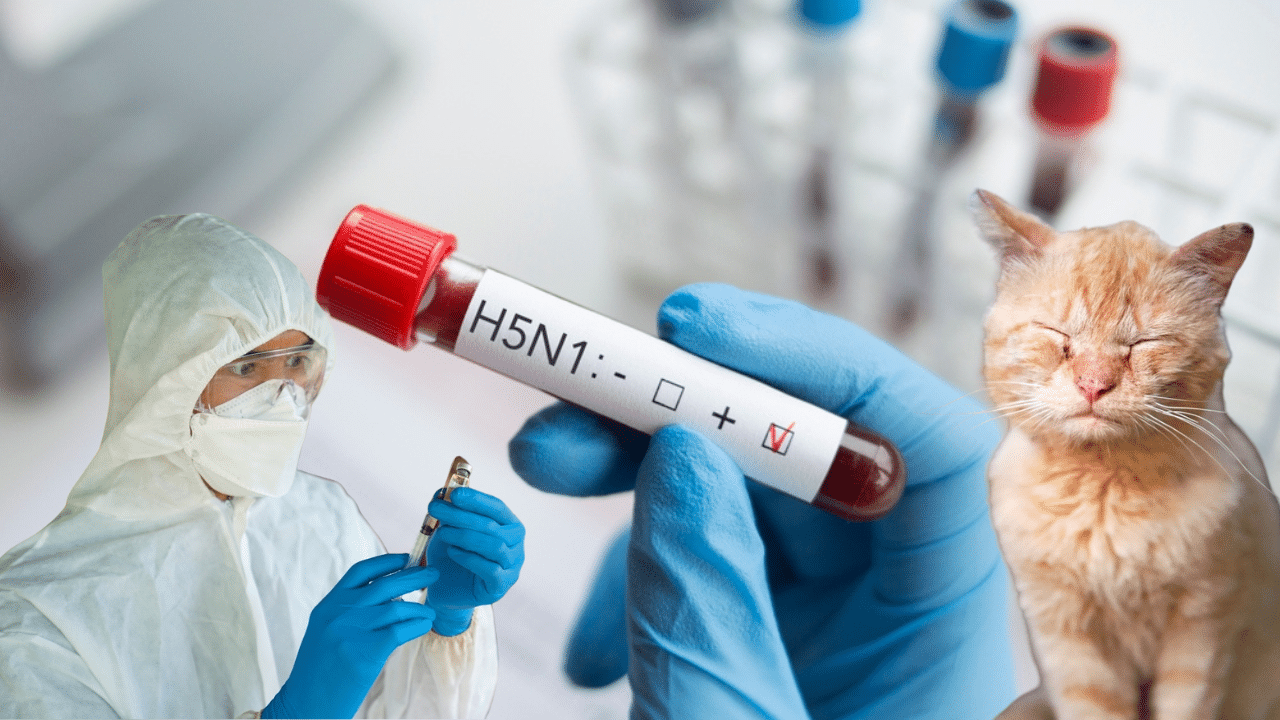(OPINION) The information that I am about to share with you is very alarming. According to the College of Veterinary Medicine at Cornell University, although there are minor differences, “feline lungs are structured just like human lungs, operate in the same way, and serve the same purpose.”
So, the fact that H5N1 has been able to spread into the “lungs, brains, hearts, and eyes” of more than 20 cats in Texas is not a good sign at all. According to the CDC, some cats that caught H5N1 at one farm in Texas ended up blind…
About two dozen farm cats were stricken with H5N1 bird flu after drinking milk from infected cows, leaving some blind and killing more than half.
The US Centers for Disease Control and Prevention (CDC) announced the cases this week, revealing at least 24 cats on a Texas farm experienced depressed mental states, body stiffness, loss of coordination, blindness, circling, and excessive mucous from their eyes and noses.
A necropsy of the dead animals, some that died in as little as two days after they fell ill, revealed the virus had spread to their lungs, brains, hearts, and eyes.
I did not know that H5N1 can cause blindness. Did you? The CDC also tells us that the bird flu caused “brain hemorrhaging” in some of the cats…
In the cats, scientists found some hemorrhaging in the back of their skulls, as well as brain hemorrhaging. Otherwise, though, the animals looked normal.
The examination revealed that the cats had microscopic lesions in their brains, lungs, and hearts. If H5N1 can do this to cats, can it also do it to humans? In an article that I posted a couple of days ago, I noted that more than half of all human cases of H5N1 since 2003 have resulted in death.
Sadly, more than half of the cats that got infected at one dairy farm in Texas also ended up dead…
More than half of cats around the first Texas dairy farm to test positive for bird flu this spring died after drinking raw milk from the infected cows, scientists reported this week, offering a window into a toll the virus has taken during its unprecedented spread through the cattle industry.
This is an extremely deadly disease. These cats apparently caught H5N1 by drinking raw milk.
Scientists tested the cows that produced that raw milk, and they found that some of those cows “had tiny lesions in their mammary glands”…
Following the felines’ deaths, the CDC also tested the cows, finding puzzling symptoms as well.
Some of them that died were producing normal milk before they succumbed to illness, and some of the cows had tiny lesions in their mammary glands – an unusual symptom.
That is certainly very alarming. Scientists have also discovered that the amount of H5N1 “in the udders of infected cows is off the charts high”…
While the contribution of respiratory transmission is still in question, there appears to be little doubt that a lot of spread is happening in milking parlors, where cows are strapped into the milking machines, and that in dairy cows, H5N1 seems to be primarily infecting mammary glands. The amount of virus in the udders of infected cows is off-the-charts high, making it easy to see how one cow’s infection soon becomes a herd’s problem.
“You can imagine that if such a cow is milked in a milking stall, even a few drops of milk remaining on the teat cup which is used to milk will then subsequently contaminate the teat of the next cow,” said Thijs Kuiken, a pathologist in the department of viroscience at Erasmus Medical Center in Rotterdam, the Netherlands. “So you can imagine very easily how, in the course of a few days, the virus could spread very fast among the cows being milked on that farm.”
Please take a few moments to read those two paragraphs again. This is where the milk you buy from the grocery store comes from.
Approximately one out of every five samples of grocery store milk that the FDA recently tested came back positive, but the FDA claims that it is still safe to drink…
Around 1 in 5 milk samples the Food and Drug Administration checked from U.S. retailers tested positive for H5N1. However, the agency said last week that studies show that pasteurization is working to kill off the virus in milk; only harmless fragments remained. Officials have repeatedly urged Americans not to drink raw milk.
The good news is that the pasteurization process kills H5N1 in our milk. But now that dairy cows are being infected nationwide, experts are warning that a strain could potentially emerge that would be very dangerous to humans…
It’s a numbers game. Although all viruses mutate routinely, flu viruses are particularly good at shapeshifting. They can even swap entire chunks of genetic material with other flu viruses if an animal is co-infected with more than one of them.
These mutations happen randomly, and most don’t make the viruses more dangerous to humans — but it’s entirely realistic to imagine that some occasionally do. If that occasionally human-threatening mutation happens to a flu virus that has infected a wild fox, it doesn’t pose a particularly high risk of causing a pandemic among humans.
After all, few wild foxes have contact with humans. However, if it happens in a cow, there are far more opportunities for the virus to workshop its new features effectively.
Workers on dairy farms constantly interact with cows and their milk — they check udders, hook and unhook milking machines, and perform other tasks to care for the animals.
That puts them in lots of contact with any virus infecting the cows. If the virus did not infect and kill people or doesn’t mutate and adapt as easily as the flu does, perhaps it wouldn’t be as concerning — but H5N1 does infect people at close proximity to animals, and at least half of the more than 900 people who’ve been infected with the virus since it came on the scene in 1996 have died.
Let’s hope that H5N1 does not mutate into a form that can easily spread among humans anytime soon.
Because if that happens, we will see a panic that will far exceed anything we have witnessed.
Now that they have tested our milk, U.S. officials are also starting to test grocery store beef…
The U.S. government says it will begin testing ground beef samples at stores in states with outbreaks of bird flu in dairy cows.
Federal officials are investigating the safety of beef and milk after 34 dairy cattle herds in nine states and one person in Texas tested positive for the H5N1 virus in late March.
Hopefully, once those tests are completed, we will get good news about our beef supply. (READ MORE)








